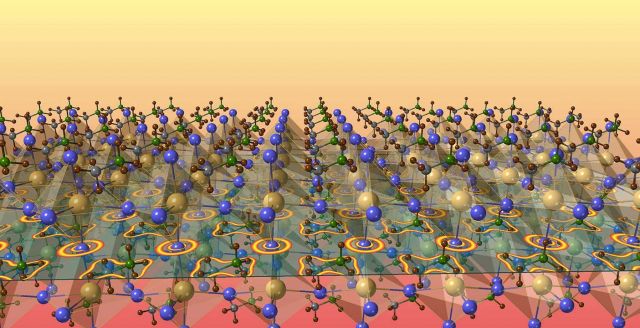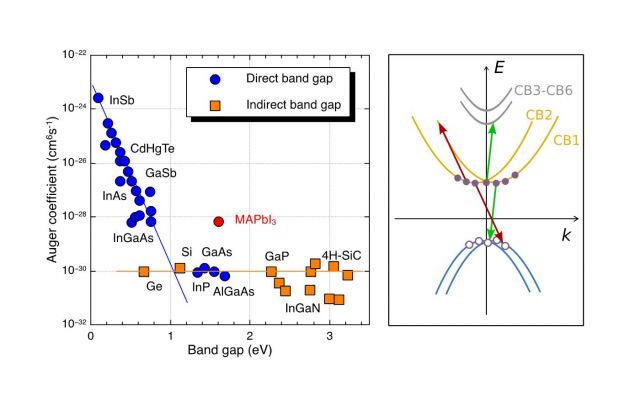Halide Perovskites
Since their first application in photovoltaics in 2009, halide perovskites have received increasing attention. The power conversion efficiency of perovskite solar cells has achieved a record of 25.2% within 10 years. This superior efficiency is already comparable with that of single-crystalline Si cells, which required multiple decades of research efforts. In addition, halide perovskites can be cheaply fabricated and extended to a wide spectrum of applications, covering light emitters, lasers, photocatalysts, actuators, and scintillators. Despite the remarkable success, it is still unclear why the halide perovskites are so efficient; the underlying mechanisms are under active debate. We approach this problem from the fundamental level of carrier recombination processes. Building on our approaches developed for uncovering and surmounting loss mechanisms in nitride light emitters, we have extended our methodology to deal with the peculiarities of the halide perovskites, where strong spin-orbit coupling and anharmonicity are present. Using advanced techniques, we can critically assess the key concepts and propositions, and provide valuable insights into the carrier recombination mechanisms. Our studies not only focus on addressing the origin of the remarkable efficiencies, but also aim at guiding improved design of optimized materials that can overcome drawbacks such as instability and toxicity.
Radiative recombination in hybrid perovskites
Hybrid perovskites are highly efficient optoelectronic materials with solar conversion efficiencies greater than 25%. A number of research groups previously attributed the high efficiency of the hybrid perovskites to an indirect band gap originating from strong spin-orbit coupling. It was argued that the indirect nature of the gap suppresses radiative recombination between electrons and holes, and thus minimizes undesirable carrier recombination. Using our recently developed first-principles approaches, we accurately determine the spin texture of the band edges [1] and quantitatively compute the radiative recombination rates in the prototypical hybrid perovskite MAPbI3 (MA = CH3NH3). [2] We find that the radiative recombination is actually as strong as in conventional direct-gap semiconductors. This result should put an end to misguided attempts to analyze and design device characteristics based on erroneous assumptions about the recombination rate.
Auger recombination in hybrid perovskites
Strong radiative recombination means that these materials are also useful for LED applications. However, current densities in LEDs are much higher than in solar cells, and at high carrier concentrations nonradiative recombination processes can become detrimental. Such nonradiative losses have been observed, but experimentally it is not possible to identify the microscopic origins. Building on the unique expertise in our group, we compute the Auger recombination coefficients in MAPbI3. We demonstrate explicitly that the exceptionally high Auger coefficient observed in MAPbI3 is due to a coincidental resonance between the band gap and a sequence of bands at energies approximately equal to the gap above the conduction band edge. [1] Additionally, we show that the high Auger coefficient can be suppressed by chemical substitution and eliminating the octahedral distortions of the halide lattice. [2]


